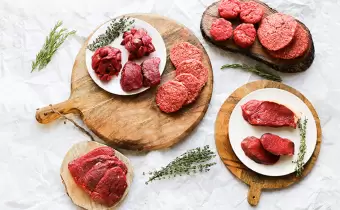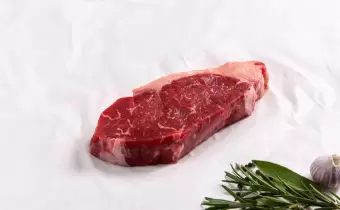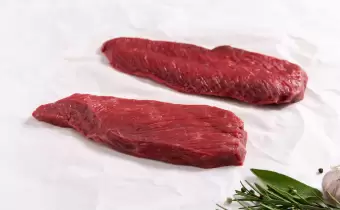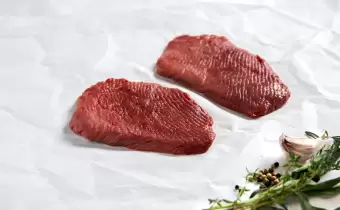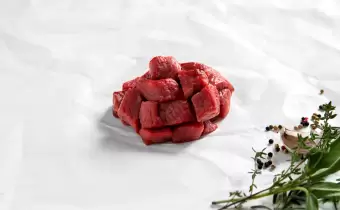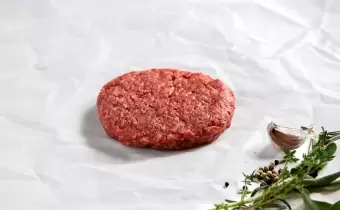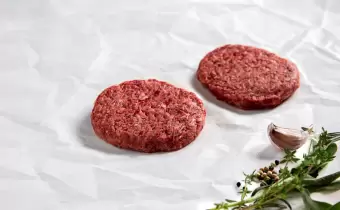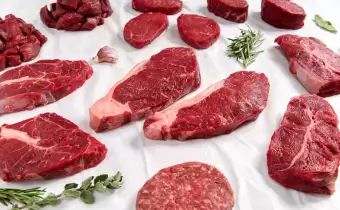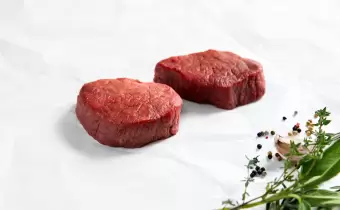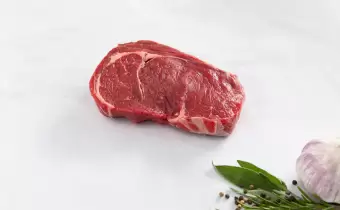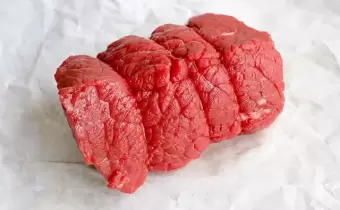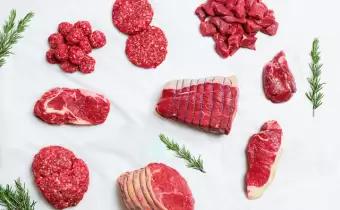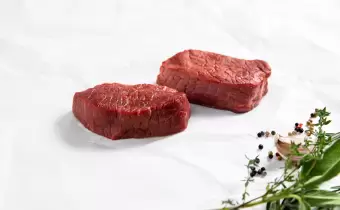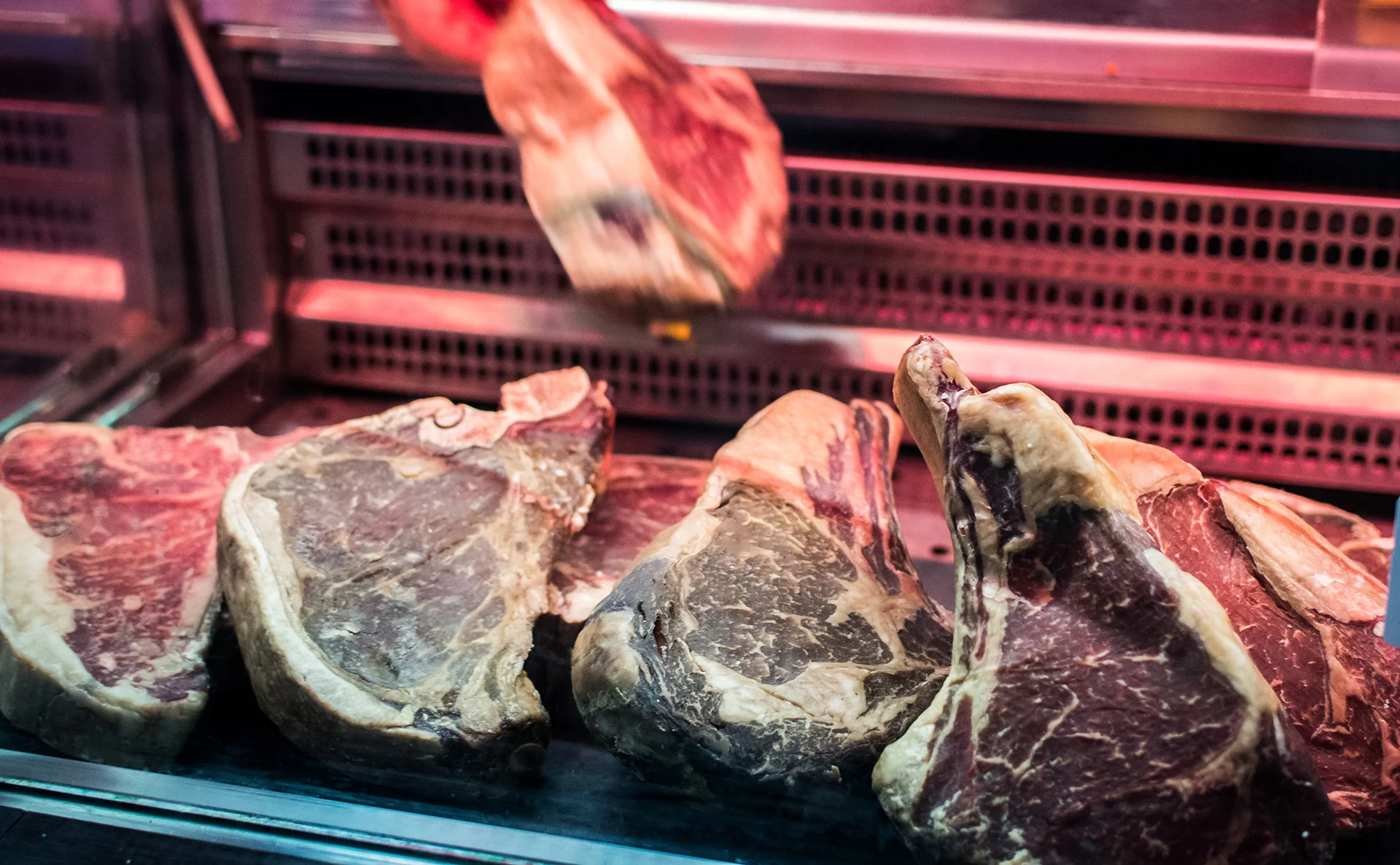
Beef Ageing
The Definitive Guide
What is beef ageing?
After a cow is slaughtered, skinned, gutted and cleaned, beef ageing is the process by which the carcase is kept under climate-controlled conditions to hone the natural breakdown of its connective tissues, and foster the evaporation of its moisture.
Why is beef aged?
There are two main reasons why beef is aged:
- Taste & flavour: By evaporating the beef’s moisture, ageing increases the concentration of beef flavour in the meat - in other words, making it taste even better!
- Texture: The ageing process triggers the beef's naturally present enzymes to start breaking down the connective tissues holding it all together. As a result, your beef becomes much more tender!
How does the ageing process work?
The specific ageing process depends on which broader method of ageing is undertaken. There are two ageing methods most commonly used: Dry-ageing and wet-ageing.
Dry Ageing
The dry-ageing method primarily works by hanging the (non-covered) beef carcass inside a closed room at a controlled temperature (usually 0° to 4 °C) and relative humidity (75%-80%) levels. Doing so calibrates:
- The work of the beef’s natural enzymes (µ-calpain) in breaking down
(1) proteins and fats into amino acids and fatty acids which create a meaty/nutty taste
(2) connective protein tissues to tenderise the beef - The growth of a fungal (thamnidium) crust on the surface of the beef which is trimmed off before cooking. This fungus is known to produce collagenolytic enzymes which have been found to significantly intensify the flavor of dry-aged beef.
- The evaporation of moisture within the meat – increasing the fat-to-meat ratio of the beef carcase, thereby intensifying the taste and flavour per bite.
What is wet-ageing?
The wet-ageing method works primarily by storing primal cuts of the beef carcass inside closed, vacuum-sealed bags at a temperature of 0 °C to 7.2 °C.
Unlike dry-ageing techniques, wet-ageing means that the meat is not in contact with the air, but rather ages in its own natural juices. This way, the concentration of enzyme µ-calpain activity in breaking down the beef’s connective tissues is very, very high. Unlike dry-ageing, the process of water evaporation and the growing of exterior fungal crust does not take place. The process of wet-ageing beef is thought to make the beef incredibly tender and deliver a slightly metallic but still very tasty flavour.
Should I choose dry-aged or wet-aged beef?
The agelong debate has been whether one should choose for dry-aged or wet-aged beef. Dry-aged beef delivers an incredibly deep rich and nutty taste, while wet-aged – when done right – provides an almost unmatchable degree of tenderisation through the high concentration of enzyme activity. Though it is very difficult to find, we recommend sourcing grass-fed beef that has employed a mix of both dry and wet -ageing techniques — allowing you the best of both taste and tender worlds!
Hunger bekommen?

- Location: Offwell, Honiton
- Breed: South Devon
- Earnumber: 400111
- 7 different meat-cuts
- 28 meals / 3.5 Kg
- Final Animal Delivery Date 22 July

- Location: Offwell, Honiton
- Breed: South Devon
- Earnumber: 400111
- 10 different meat-cuts
- 56 meals / 7 Kg
- Final Animal Delivery Date 22 July

- Location: Stowmarket, Suffolk
- Breed: English Longhorn
- Earnumber: 500125
- 9 different meat-cuts
- 52 meals / 7 Kg
- Estimate Delivery 17 June


